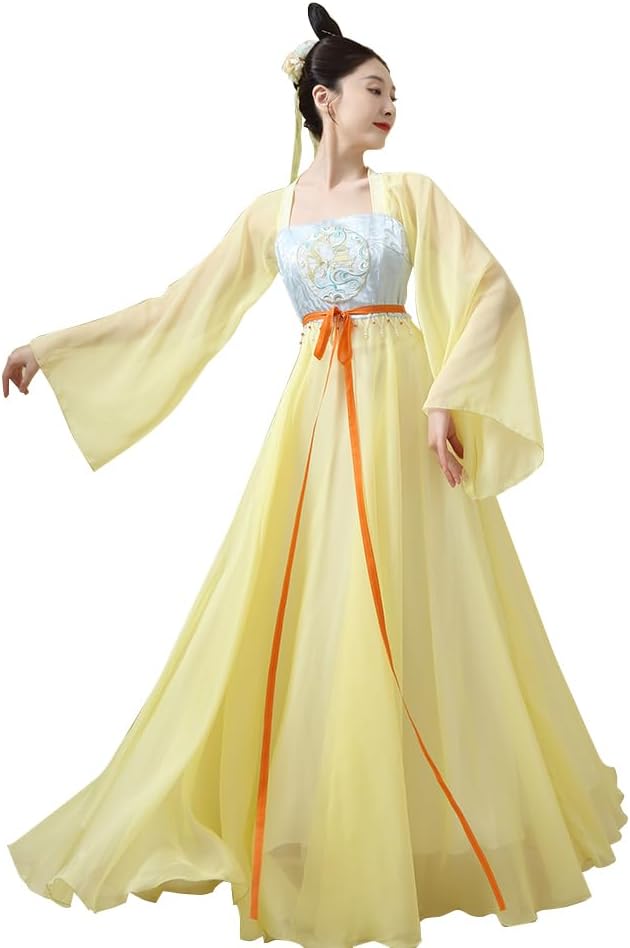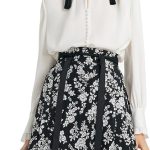Hanfu dresses, the traditional attire of the Han Chinese, have made a remarkable resurgence in recent years. In this article, we will explore the captivating world of Hanfu dresses. From their historical origins to their intricate designs and cultural significance, we will delve into the enduring allure and exquisite beauty of these iconic garments. Hanfu dresses represent a celebration of Chinese heritage, embodying the elegance of ancient Chinese fashion. Join us as we embark on a journey through time to discover the enchanting world of Hanfu dresses.
In This Article
- 1 I. A Glimpse into History: Origins and Evolution of Hanfu Dresses
- 2 II. Design and Aesthetics: Elements That Define Hanfu Dresses
- 3 III. Regional Styles: Diversity within Hanfu Dresses
- 4 IV. Cultural Resurgence: Preserving and Promoting Hanfu Dresses
- 5 V. Hanfu in the Modern Age: Adapting Tradition to Contemporary Fashion
I. A Glimpse into History: Origins and Evolution of Hanfu Dresses
1.1 Ancient Beginnings:
Hanfu dresses have their origins in the clothing worn during the Han Dynasty (206 BCE – 220 CE), evolving from earlier styles influenced by regional and cultural interactions. The Han Dynasty saw the rise of distinctive fashion trends, with Hanfu dresses reflecting the elegance and sophistication of the era.
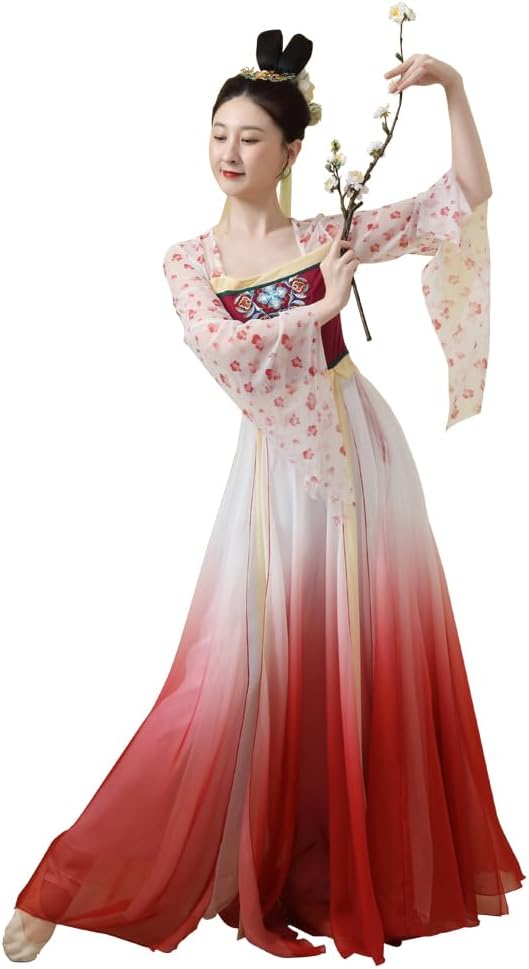
1.2 Cultural Identity:
Hanfu dresses represent more than just fashion; they embody the cultural identity and heritage of the Han Chinese. Wearing Hanfu attire is a way to connect with the rich cultural traditions and customs that have shaped Chinese civilization for thousands of years. By embracing Hanfu dresses, individuals pay homage to their ancestral roots and celebrate the beauty and grace of Chinese fashion.
II. Design and Aesthetics: Elements That Define Hanfu Dresses
2.1 Layered Silhouette:
The layered silhouette is a defining characteristic of Hanfu dresses, creating a mesmerizing visual impact. The layering technique involves the artful combination of various garments, each contributing to the overall aesthetic and grace of the outfit.
At the core of the Hanfu dress lies the Ru, an undergarment that serves as the foundation. The Ru is typically a loose-fitting and lightweight garment that provides a smooth base for the layers above. It ensures comfort and ease of movement, allowing the wearer to navigate the intricacies of the ensemble effortlessly.
To create the harmonious composition of the Hanfu dress, individuals add additional layers above the Ru. They wear the Daxiushan, a long robe with wide sleeves, to enhance the elegance and grandeur of the outfit. The Beizi, a shorter jacket or coat, is optionally added for warmth or as a decorative element.
The layering of Hanfu dresses is not mere adornment; it embodies profound symbolism. Each layer represents a distinct role within society, reflecting the hierarchical structure of ancient Chinese culture. The carefully arranged layers showcase a sense of refinement and attention to detail, making the Hanfu dress a true art form.
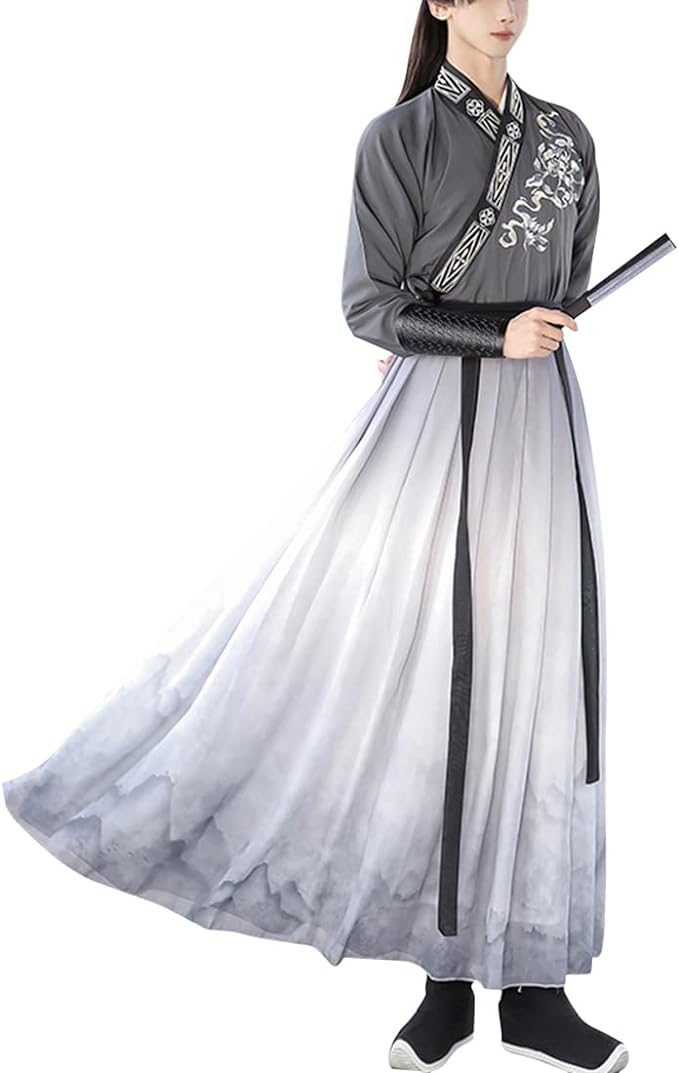
2.2 Exquisite Details:
Therefore, Hanfu dresses are a testament to the exceptional craftsmanship and artistry of ancient Chinese artisans. Intricate details and embellishments adorn the fabric, captivating the eye and showcasing the skillful mastery of traditional techniques.
One of the most striking features of Hanfu dress is the delicate embroidery that graces the fabric. Elaborate patterns featuring flora, fauna, mythical creatures, and auspicious symbols are meticulously stitched into the fabric, creating a stunning tapestry of colors and designs. The embroidery techniques employed by artisans vary, from precise cross-stitching to intricate needlework, each imbued with its own unique charm.
In addition to embroidery, the fabric itself can be adorned with exquisite woven patterns, such as brocade or jacquard. These intricate patterns offer depth and texture to the fabric, elevating the overall visual appeal of the Hanfu dress. Luxurious fabrics, including silk, satin, and damask, are often selected for their lustrous sheen and supple drape, adding to the opulence of the ensemble.
III. Regional Styles: Diversity within Hanfu Dresses
3.1 Traditional Styles:
In addition, it is important to note that Hanfu dresses exhibit regional variations that showcase the diverse cultural influences within China. From the Northern Hanfu with its straighter lines and high collars to the Southern Hanfu with its more flowing and relaxed styles, each region brings its own unique interpretation to these iconic garments. These regional variations add a fascinating layer of diversity to the Hanfu tradition, reflecting the rich tapestry of Chinese culture.
3.2 Festive Attire:
Furthermore, Hanfu dresses are frequently reserved for special occasions and festivals, contributing a sense of elegance and grandeur to these celebratory events. With their vibrant colors, intricate embroidery, luxurious fabrics, and opulent accessories, Hanfu dresses truly elevate the festive atmosphere and evoke a profound sense of cultural pride.
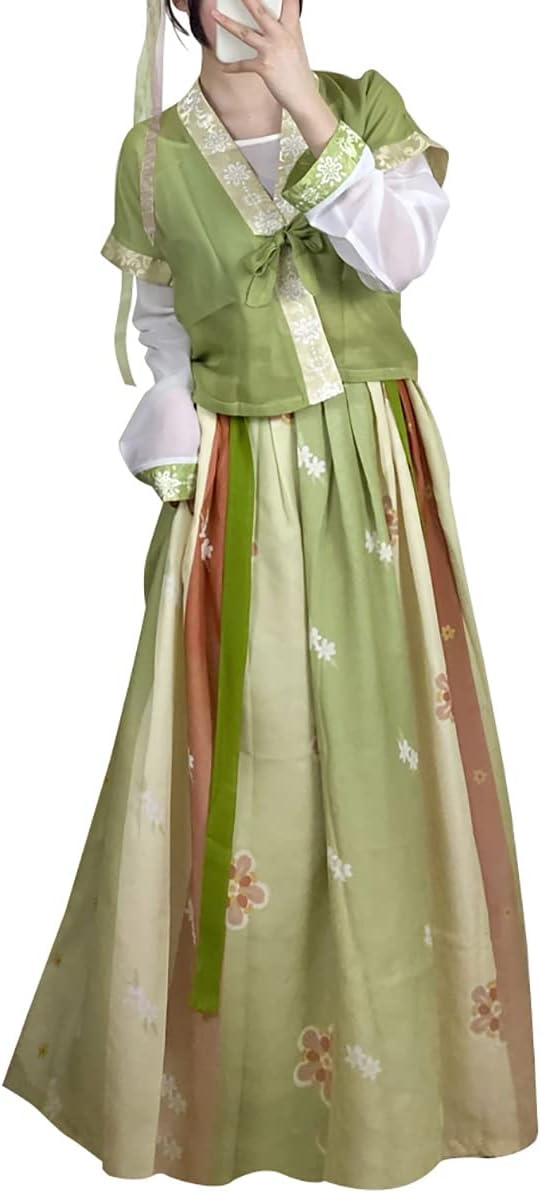
IV. Cultural Resurgence: Preserving and Promoting Hanfu Dresses
4.1 Reviving Tradition:
Moreover, this resurgence of interest in Hanfu dresses has been instrumental in preserving and promoting the art form. Enthusiasts, designers, and cultural institutions have played a pivotal role in organizing fashion shows, exhibitions, and creating online communities dedicated to Hanfu. Through these avenues, the beauty and significance of Hanfu dresses are celebrated and shared with a wider audience.
4.2 Cross-Cultural Exchange:
The resurgence of Hanfu dresses has also fueled cross-cultural conversations and exchanges. The timeless elegance and cultural heritage embodied in Hanfu dresses attract people from different backgrounds and nations. This cultural exchange fosters a deeper appreciation and understanding of Chinese traditions and fashion.

V. Hanfu in the Modern Age: Adapting Tradition to Contemporary Fashion
5.1 Modern Interpretations:
Hanfu has evolved to adapt to contemporary fashion sensibilities while maintaining its traditional elegance and charm. Designers have introduced modern interpretations of Hanfu dresses, which incorporate new elements such as varied necklines, innovative fabrics, and creative accessories. These adaptations ensure that Hanfu remains relevant and accessible in the modern age.
5.2 Everyday Wear:
Hanfu dresses are no longer just reserved for special occasions. There has been a growing trend of incorporating Hanfu elements into daily attire, allowing individuals to embrace the beauty and elegance of these garments in their everyday lives. The versatility of Hanfu dresses lends itself to various styles, from casual outfits to professional attire, giving individuals the opportunity to express their personal sense of fashion while honoring ancient traditions.
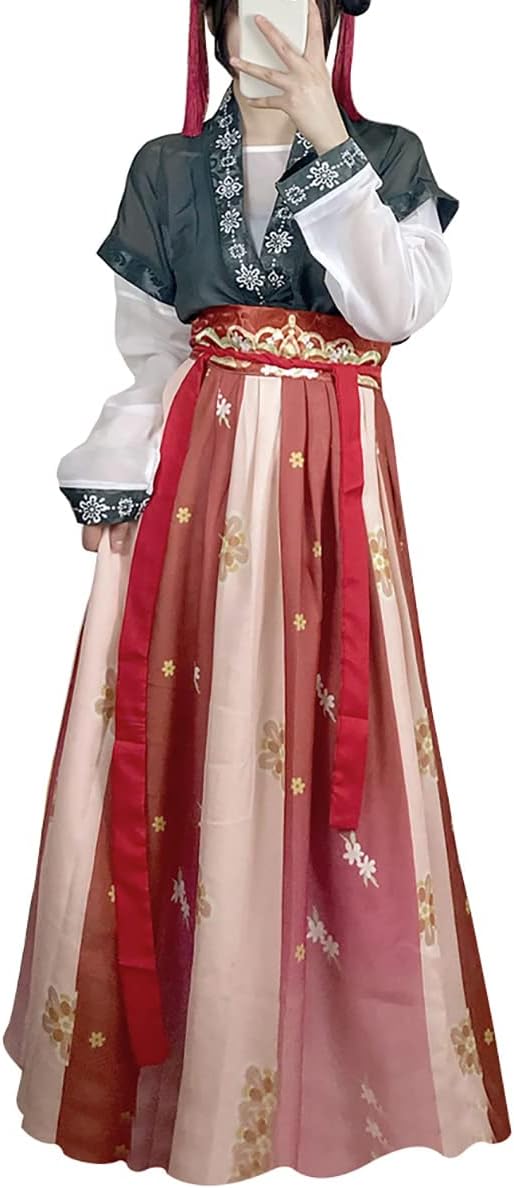
Enchanting Elegance of Hanfu Dresses
In conclusion, Hanfu dresses are more than just clothing; they are ambassadors of Chinese culture and tradition. The layered silhouette, exquisite details, and regional styles make Hanfu dresses truly captivating and visually stunning. Finally, The resurgence of interest in Hanfu dresses signifies a revival of cultural pride and a celebration of the ancient traditions that continue to inspire the modern world. By embracing Hanfu dresses, individuals connect with their cultural roots and become part of a vibrant community that seeks to preserve and promote the elegance and allure of Chinese fashion.
